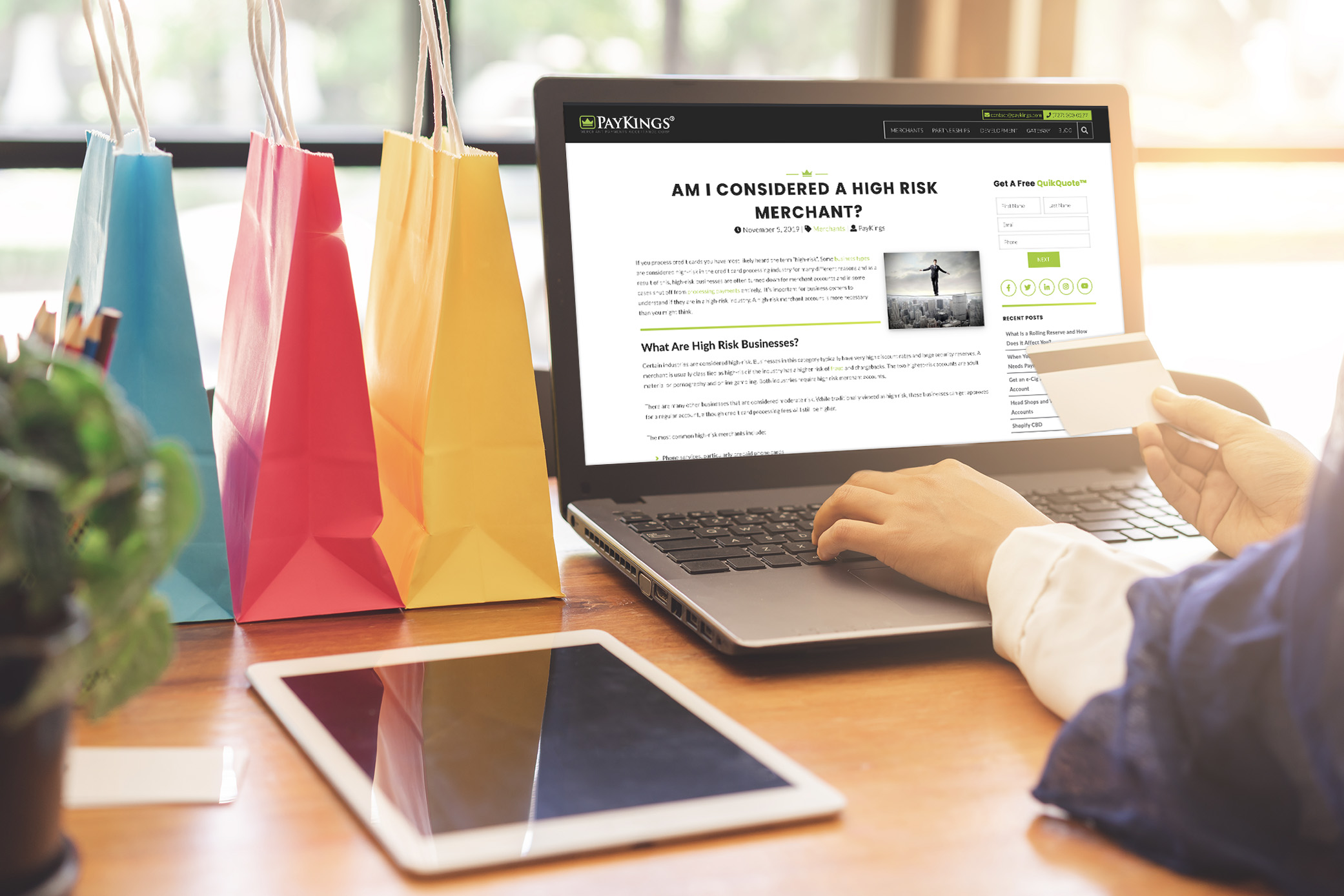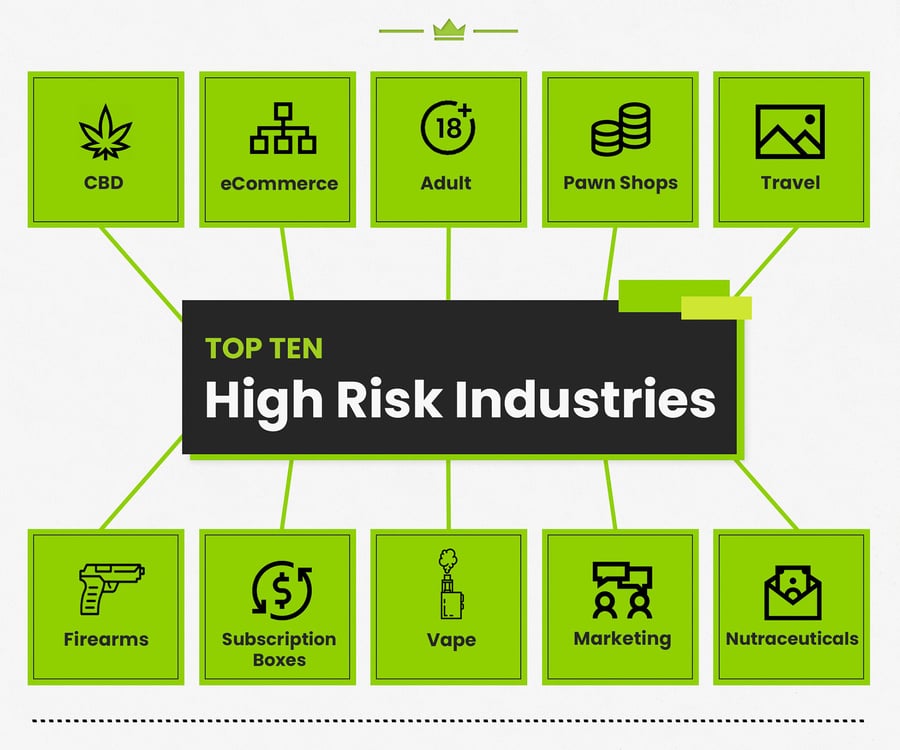
A merchant account is an often overlooked, but key component for an ecommerce business. Together, with a payment gateway, your account gives you the ability to accept credit cards through your website. But many new online businesses are not familiar with the stipulations involved with their merchant account.
Every company that wants to do business online will want to have payment resources available to customers shopping on their site. Accepting major credit cards and offering streamlined ways to flow through the purchase cycle is critical to increase sales. So when does your merchant account come into play throughout the purchasing process?
Let’s say a customer is shopping on your site and finds a product they want to buy. The last step for them is clicking the complete purchase button, which finalizes the transaction. This is where certain automations take over and your website tools act as a terminal to securely approve the purchase.
Once your merchant account is set up and running smoothly, ideally, you have no more issues to worry about. However, if your company is in a “High Risk” industry, you may need to reconsider your merchant account options.
What Makes Your Company High Risk?
High risk merchant accounts are bank accounts for companies who operate in unique business verticals. These types of businesses can have legal restrictions or brand associations that banks aren't willing to endorse. Additionally, your business may be considered high risk if there are red flags associated with your purchasing history. These include increased chargebacks, returns, or even cases of fraud.

Top Ten High Risk Industries
Take a look at examples of high risk industries to familiarize yourself with the landscape. Here are a few examples of business types that would qualify and why:
- CBD - This industry has seen a drastic increase in sales since the 2018 Farm Bill was passed, which gave more opportunities to farmers to grow hemp plants. It’s considered high risk because of the evolving legal landscape. CBD products include oils, ingestibles, tinctures, flowers, and even CBD for pets. Because it is derived from the cannabis plant, CBD also undergoes state regulations related to THC content. The combination of this modern medicinal and ingestible product with a legal groundwork of change and controversy qualifies it as high risk.
- Vape - Initially promoted as a cigarette alternative, vape is now in a category of its own. With creative marketing and ostensibly decreased health risks, ecigarettes are naturally grandfathered into the high risk category because of their overlap with tobacco industry regulations. We are seeing frequent changes in this market, which include banning flavored products by the FDA and legal minimum age adjustments from 18 to 21.
- Adult - It goes without saying that the Adult industry is one that banks and major companies do not want to have direct associations with. Nonetheless, companies in this category continue to thrive and historically pave the way for new forms of online payment processing. The term Adult is often used as an all-encompassing term and includes many sub-categories such as dating, magazines, film, and even cruises.
- Fantasy Sports - Since CBS launched the first online fantasy football pool in 1997, the industry has only grown. Each year thousands of fans from all around the world carefully research their favorite players and put together their own custom teams to see if they can come out on top as the best coach, owner, and organizer of their league. For many, it’s a matter of pride to see who takes the title, but many have money on the line. It’s the gambling aspect of the business that qualifies fantasy sports as high risk.
- Nutraceuticals - From topical ointments to botanical sublinguals, the nutraceutical industry is famous for growing sales and adapting product lines. Intrinsic in the name is the relationship these items have with pharmaceuticals. The precarious correlation between a natural cure all and medically-approved treatment is what makes these items risky to sell online.
- Subscription Boxes - Subscription box products can be part of any type of industry that is ready to package and ship a certain type of product to a unique customer niche. The products aren’t what makes subscription boxes high risk, but rather the billing structure. Ongoing monthly billing has higher rates of chargebacks because customers often leave their order on auto-pilot and make transactions they might be unaware of. Banks and subscription billing companies don’t want to deal with excessive refunds or chargebacks. But it’s an unfortunate circumstance of the industry, which makes it a bit more difficult for merchants.
- Pawn Shops - As new industries continue to take their businesses online, even classic brick-and-mortar stores are finding value in ecommerce markets. Pawn shops have a number of unique product and payment characteristics. Most of their products are used and sold to them by local sellers. Some of them are high ticket items like jewelry or collectibles. Items like this take on risk because there is a higher chance of fraud associated with the deal. For example, a customer might ask for a refund after receiving the item and claim that it never arrived. This instance of friendly-fraud is an issue for both the bank and merchant.
- Travel - As the recent pandemic has shown us, travel plans aren’t always permanent. Disruptions in supply chains or services that aren’t guaranteed make transactions riskier. People often use travel services so they can insure their purchase and hedge against the risk of missing their trip. Multiple cancelled payments can result in account troubles for travel companies. High risk merchant accounts are a perfect option for companies in this vertical.
- Firearms - Not only are firearms on the forefront of political discussions, but they also have strict age and legal regulations. Outside of these policies are brand associations. Major companies like PayPal stand to lose significant value if their brand becomes associated with an illicit firearms transaction or tragedy. For this reason, only high risk merchants will accept the sale of firearms or related items through their payment processing account.
- Marketing - Marketing companies offer services that range from PR advertising and SEO to unique digital products like tutorials and downloadable books filled with industry insights. As with any aspect of business development, growth takes discipline and execution. In the case of marketing materials, there are higher return and chargeback rates for products that may have made motivational claims, but may not have manifested in the added sales volume a customer was hoping for. A high risk merchant account for a marketing business allows them to have a higher level of chargebacks and work more directly with customers to drive efforts without having to worry about excessive refunds.
What Is A High Risk Merchant Account?
A high risk merchant account is a custom banking solution for companies operating in unique industries. As the diversity of ecommerce stores grows, more companies will be looking for payment processing solutions.
Low risk merchants have options like PayPal, Square, and Stripe that offer similar fees and provide fast transactions. However, these companies don’t provide accounts to merchants who are deemed high risk.

Steps To Apply For A High Risk Merchant Account
- Research Companies - As with most business services, there is a lot of competition among high risk merchant account providers. To find the best, you’ll want to do your homework and pick one that suits your business needs.
There are two main ways to search for a high risk payment processor. The first is to search based on your industry. For example if you are a CBD merchant, you should look for a “high risk cbd merchant account.” The search results will provide lists of multiple companies that are good contenders for your account.
The second way is to search for high risk merchant accounts in a more general way. Some of these companies are brokerages, which connect you to a banking partner that is willing to create an account. Others are registered ISOs (Independent Sales Organizations) that can create your merchant account through their company.
Regardless of which type of account provider they are, you’ll want to make sure they have the resources to onboard your specific business.
- Get In Touch - After you’ve found a number of reputable companies, reach out to a few of them to learn more about how they can help. Customer service is crucial here. Your high risk merchant account provider is a link to your business bank account and revenue stream. You’ll want to make sure that the people you work with are well-informed and answer any questions you may have about fees, approval time, or gateway integrations.
- Submit An Application - The high risk industry is based on identifying certain characteristics that may cause inefficiencies in your transactions. To anticipate and counter these issues, banks collect information about your company so they can learn more about your business. For high risk merchant account providers, this means a detailed application process.
Most companies have an application that’s readily accessible online. You can often fill it out and save it for later by creating your own profile on their website. Some of the most important information on the application includes sharing information about your existing sales volume, how long you’ve been in business, and the location of your company.
- Introductory Phone Call - Your first discussion with the merchant account team can come whenever you feel like calling and learning more. But the phone call on this list is referring to a security check. At some point after you’ve filled out the application, a customer service representative will reach out to verify your information. This is done as a security measure to reduce fake applications or cases of fraud.
- Additional Documents - Other documents may include COAs for CBD businesses, articles of incorporation, or specific statements about your past processing. In some cases, a provider will want to see proof that both the company and business owner are in the same country with active social security numbers. There are different regulations when it comes to processing internationally, so banks want to obtain certain details before moving on to the next steps with your account.
- Bank Review - After you have submitted your application and documents, your high risk merchant account provider will submit your bank package on your behalf. This review process can be as short as two days, but sometimes takes up to ten business days. The processing speed depends on your company and the resources banks have to review the information you’ve provided.
If there is a surge of new applications, regulation changes, or internal audits at the bank, it may slow down the process. The high risk merchant account company you choose to work with will keep you apprised of progress and make sure your application is moving through the necessary steps properly.
- Stipulations - Oftentimes, a bank will request either more information or changes to your products or website. For example, if you’re selling nutraceuticals, you won’t be allowed to include language that has medical claims that aren’t FDA approved. Here are some examples of stipulations for a CBD company:
-
- Current Utility Bill - with the corporate address
- Proof of Domain Ownership - screenshot or email with owner name or business
- State-Issued Business License or Tax Permit
- COAs (Certificates of Analysis) for every CBD product sold online labeled with the product name as it appears on your website
-
- Underwriting - Once your application has gone to underwriting, it means you’re only one step away from approval. At this point, there is nothing left to do but wait. The bank puts together your agreement and updates their side of your account to make sure your transactions can process smoothly. They will also finalize any service fees and add your custom rates to their platform so you can track your volume and rates accordingly.
- Approval - Once underwriting is complete, your account is all set up. Your high risk processor will contact you and inform you that your business has been approved. Immediately, you’ll be able to take payments on your website and see the revenue generating. You will also have access to a payment portal where you’ll be able to see every transaction over time as well as monitor important information like chargebacks or returns.
- Process Your Payments - The steps to setting up your account are a one-time commitment. But in order to ensure your account stays open, be sure to follow the agreements put in place by your bank. If you add new products to your site or make changes to your brand, be sure to update your payment processing team so they can stay on top of your growing business.
How A Payment Gateway Works
A payment gateway is involved with the last step of an online transaction. If your website design is the showroom, then your gateway is the terminal your customer (metaphorically) slides their credit card through to complete their purchase. The payment gateway is an online integration that communicates information from the customer’s bank account to your merchant account. These gateways are set up with straightforward code that is compatible with major platforms.
Final Thoughts
Whether you’re a startup or established enterprise company, an essential part of running your ecommerce shop is processing payments. There are many different types of merchant account providers, but it’s critical to find one that is right for your business.
To make sure your business runs smoothly, you should follow the Terms and Conditions of your account agreement. High risk companies that sign up with mainstream payment providers often don’t qualify, but it’s not until later that they figure it out.





Leave a reply or comment below